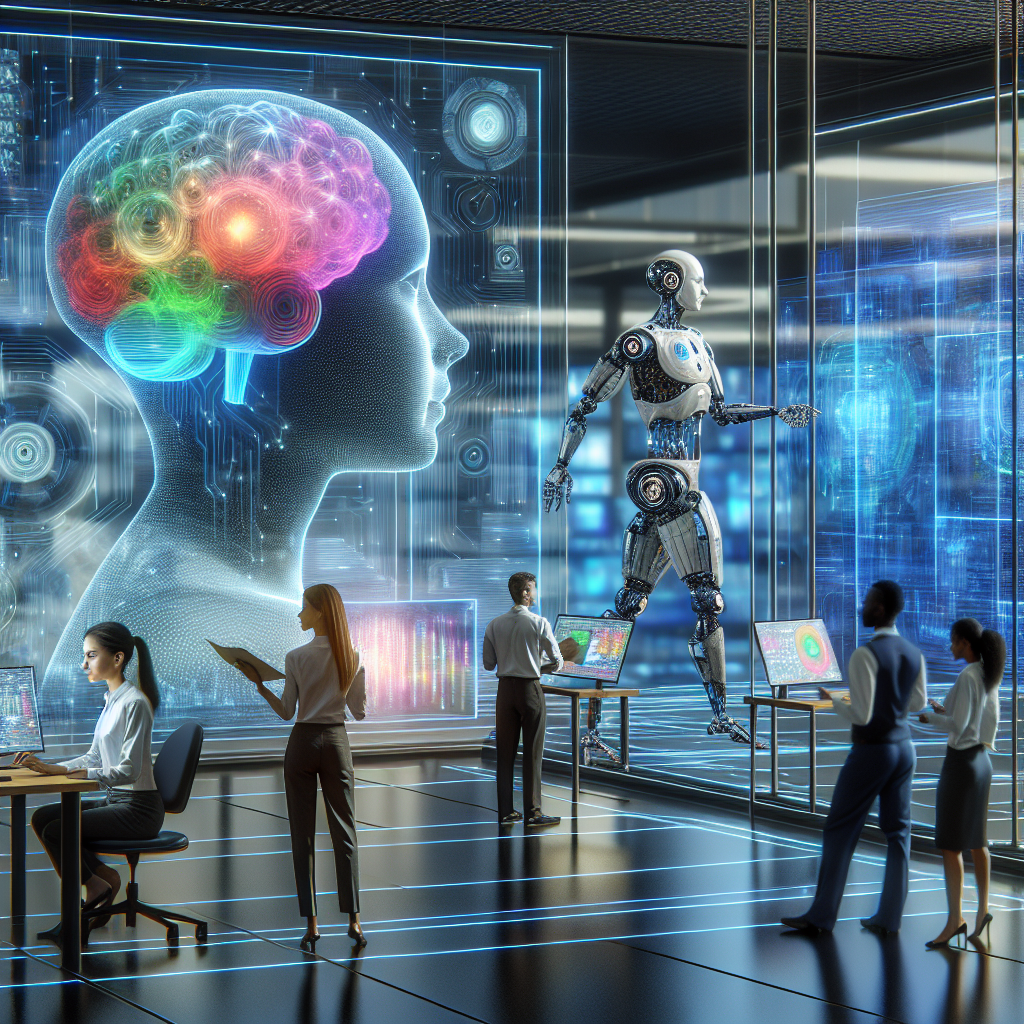Artificial General Intelligence (AGI) is a term used to describe a type of artificial intelligence that is capable of performing any intellectual task that a human being can do. This includes tasks such as reasoning, problem-solving, learning, and understanding natural language. AGI is seen as the next step in the evolution of artificial intelligence, moving beyond the narrow, task-specific AI systems that are currently in use.
One of the most significant ways in which AGI is reshaping the future of work is through its impact on human creativity. Creativity is often seen as a uniquely human trait, one that sets us apart from machines. However, with the development of AGI, this distinction is becoming increasingly blurred. AGI has the potential to assist and augment human creativity in ways that were previously unimaginable, leading to new opportunities and challenges in the workplace.
AGI and Human Creativity
The relationship between AGI and human creativity is a complex and multifaceted one. On one hand, AGI has the potential to revolutionize the creative process, providing new tools and techniques that can enhance and expand our creative abilities. For example, AGI systems can analyze vast amounts of data and generate insights that can inspire new ideas and innovations. They can also automate repetitive tasks, freeing up time and mental energy for more creative pursuits.
On the other hand, AGI also raises concerns about the impact on human creativity. Some fear that as machines become more capable of performing creative tasks, they may eventually surpass human creativity altogether, leading to a world where machines are the primary creators of art, music, literature, and other forms of expression. This raises questions about the nature of creativity itself and what it means to be a creative individual in a world dominated by AI.
Despite these concerns, many experts believe that AGI has the potential to enhance human creativity rather than replace it. By working alongside AI systems, humans can leverage their unique abilities, such as emotional intelligence, intuition, and empathy, to create truly innovative and impactful work. AGI can act as a catalyst for human creativity, providing new perspectives, insights, and tools that can help us push the boundaries of what is possible.
AGI and the Future of Work
The impact of AGI on the future of work is already being felt across a wide range of industries. As AI systems become more advanced and capable, they are increasingly being used to automate tasks that were previously performed by humans. This has led to concerns about job displacement and the need for workers to adapt to new roles and responsibilities.
However, AGI also presents new opportunities for innovation and growth in the workplace. By harnessing the power of AI, organizations can streamline processes, improve efficiency, and drive new levels of productivity. AGI can also enable new forms of collaboration and communication, breaking down traditional barriers and enabling teams to work together in new and innovative ways.
In particular, AGI is reshaping the creative industries, such as art, design, music, and writing. AI systems are being used to generate new ideas, create original works of art, and even compose music. These technologies are enabling artists and creators to explore new possibilities and push the boundaries of their craft. AGI is also being used in fields such as marketing, advertising, and content creation, where it can help companies develop more targeted and personalized campaigns.
FAQs
Q: Will AGI replace human creativity?
A: While AGI has the potential to enhance and augment human creativity, it is unlikely to replace it altogether. Creativity is a complex and multifaceted process that involves a range of cognitive, emotional, and social factors that are difficult to replicate in machines. AGI can provide new tools and techniques that can assist in the creative process, but ultimately, human creativity will continue to play a vital role in shaping the future of work.
Q: How can AGI benefit the creative industries?
A: AGI has the potential to revolutionize the creative industries by providing new tools and techniques that can enhance and expand creative abilities. AI systems can analyze vast amounts of data, generate new ideas, and automate repetitive tasks, freeing up time and mental energy for more creative pursuits. AGI can also enable new forms of collaboration and communication, breaking down traditional barriers and enabling teams to work together in new and innovative ways.
Q: What are the challenges of integrating AGI into the workplace?
A: Integrating AGI into the workplace presents a range of challenges, including concerns about job displacement, the need for workers to adapt to new roles and responsibilities, and ethical considerations around the use of AI systems. Organizations will need to invest in training and education programs to ensure that employees are equipped to work alongside AI systems. They will also need to develop policies and guidelines to ensure that AI is used ethically and responsibly.
In conclusion, AGI is reshaping the future of work in profound and transformative ways. By enhancing human creativity and providing new tools and techniques, AGI has the potential to revolutionize the creative process and enable new forms of collaboration and innovation. While there are challenges and concerns associated with the integration of AGI into the workplace, the opportunities for growth and advancement are vast. As we continue to explore the possibilities of AGI, we must work together to ensure that AI serves as a force for good, empowering us to create a better and more creative future.

